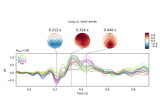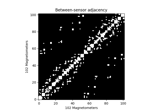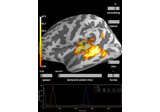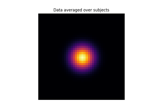mne.stats.spatio_temporal_cluster_test¶
-
mne.stats.spatio_temporal_cluster_test(X, threshold=None, n_permutations=1024, tail=0, stat_fun=None, adjacency=None, n_jobs=1, seed=None, max_step=1, spatial_exclude=None, step_down_p=0, t_power=1, out_type='indices', check_disjoint=False, buffer_size=1000, verbose=None)[source]¶ Non-parametric cluster-level test for spatio-temporal data.
This function provides a convenient wrapper for
mne.stats.permutation_cluster_test(), for use with data organized in the form (observations × time × space). See 1 for more information.- Parameters
- X
listofarray, shape (n_observations, n_times, n_vertices) The data to be clustered. Each array in
Xshould contain the observations for one group. The first dimension of each array is the number of observations from that group (and may vary between groups); the remaining dimensions (times and vertices) should match across all groups.- threshold
float|dict|None If numeric, vertices with data values more extreme than
thresholdwill be used to form clusters. If threshold isNone, an F-threshold will be chosen automatically that corresponds to a p-value of 0.05 for the given number of observations (only valid when using an F-statistic). Ifthresholdis adict(with keys'start'and'step') then threshold-free cluster enhancement (TFCE) will be used (see the TFCE example and 2).- n_permutations
int The number of permutations to compute.
- tail
int If tail is 1, the statistic is thresholded above threshold. If tail is -1, the statistic is thresholded below threshold. If tail is 0, the statistic is thresholded on both sides of the distribution.
- stat_fun
callable()|None Function called to calculate the test statistic. Must accept 1D-array as input and return a 1D array. If
None(the default), usesmne.stats.f_oneway().- adjacency
scipy.sparse.spmatrix|None|False Defines adjacency between locations in the data, where “locations” can be spatial vertices, frequency bins, etc. If
False, assumes no adjacency (each location is treated as independent and unconnected). IfNone, a regular lattice adjacency is assumed, connecting each spatial location to its neighbor(s) along the last dimension of each groupX[k]. Ifadjacencyis a matrix, it is assumed to be symmetric (only the upper triangular half is used) and must be square with dimension equal toX[k].shape[-1](n_vertices) orX[k].shape[-1] * X[k].shape[-2](n_times * n_vertices). If spatial adjacency is uniform in time, it is recommended to use a square matrix with dimensionX[k].shape[-1](n_vertices) to save memory and computation, and to usemax_stepto define the extent of temporal adjacency to consider when clustering.- n_jobs
int The number of jobs to run in parallel (default 1). Requires the joblib package.
- seed
None|int| instance ofRandomState If
seedis anint, it will be used as a seed forRandomState. IfNone, the seed will be obtained from the operating system (seeRandomStatefor details). Default isNone.- max_step
int Maximum distance along the second dimension (typically this is the “time” axis) between samples that are considered “connected”. Only used when
connectivityhas shape (n_vertices, n_vertices).- spatial_exclude
listofintorNone List of spatial indices to exclude from clustering.
- step_down_p
float To perform a step-down-in-jumps test, pass a p-value for clusters to exclude from each successive iteration. Default is zero, perform no step-down test (since no clusters will be smaller than this value). Setting this to a reasonable value, e.g. 0.05, can increase sensitivity but costs computation time.
- t_power
float Power to raise the statistical values (usually F-values) by before summing (sign will be retained). Note that
t_power=0will give a count of locations in each cluster,t_power=1will weight each location by its statistical score.- out_type‘mask’ | ‘indices’
Output format of clusters. If
'mask', returns boolean arrays the same shape as the input data, withTruevalues indicating locations that are part of a cluster. If'indices', returns a list of lists, where each sublist contains the indices of locations that together form a cluster. Note that for large datasets,'indices'may use far less memory than'mask'. Default is'indices'.- check_disjointbool
Whether to check if the connectivity matrix can be separated into disjoint sets before clustering. This may lead to faster clustering, especially if the second dimension of
X(usually the “time” dimension) is large.- buffer_size
int|None Block size to use when computing test statistics. This can significantly reduce memory usage when n_jobs > 1 and memory sharing between processes is enabled (see
mne.set_cache_dir()), becauseXwill be shared between processes and each process only needs to allocate space for a small block of locations at a time.- verbosebool,
str,int, orNone If not None, override default verbose level (see
mne.verbose()and Logging documentation for more). If used, it should be passed as a keyword-argument only.
- X
- Returns
References
- 1
Eric Maris and Robert Oostenveld. Nonparametric statistical testing of EEG- and MEG-data. Journal of Neuroscience Methods, 164(1):177–190, 2007. doi:10.1016/j.jneumeth.2007.03.024.
- 2
Stephen M. Smith and Thomas E. Nichols. Threshold-free cluster enhancement: addressing problems of smoothing, threshold dependence and localisation in cluster inference. NeuroImage, 44(1):83–98, 2009. doi:10.1016/j.neuroimage.2008.03.061.




